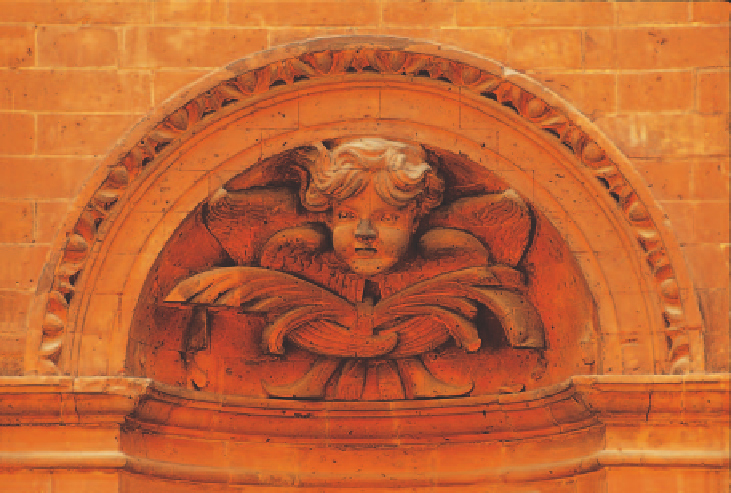Agriculture Reference
In-Depth Information
Study of these and other niches reveal first how they have to be considered
in two parts, the body and the hood, which were always set out and cut as two
distinct and separate operations. Secondly that the hood needed to be more
accurately set-out, cut and constructed to maximise its strength to accept and
transmit the masonry directly above it.
Niches with Horizontal Hood Courses
Occasionally niches were constructed with horizontal hood courses continuing
on the bond of the body, almost always when it was intended to carve
in situ
a
major part of the hood; a craft practice that appears to be uniquely English.
When executed, the hood brickwork was either bench-built in the cutting
shed and set into position, or laid
in situ
across the opening on a temporary
timber support to create what is termed a brick 'lump'; with fully-filled joints
so none would work hollow with carving. A wonderful example of this form
of carved niche head construction is Helder's (re-built) masterpiece in the
Victoria and Albert Museum (Fig. 111); also the large central niche of his (re-
built) frontispiece originally from Christ's Hospital School, London, now re-
erected at their Horsham campus in West Sussex (Fig. 112).
Figure 111
Carved 'Amorini' to
the niche hood of
horizontally laid gauged
work, 1675. (Courtesy of
the Board of Trustees,
Victoria and Albert
Museum, London.
Photo Will Pryce ©
Thames & Hudson Ltd,
London. From Brick a
World History, by James
W.P. Campbell,
Thames & Hudson)
The construction of these niches generally reveals hood joints of approxi-
mately 0.5 mm in thickness, in contrast to the, still fine, average of 2 mm thick-
ness to the niche body. This is due to the lumps being constructed in either

